Making Impactful Crop Management Decisions in a Challenging Economy
It is no secret that agriculture faces many head winds in 2020. The effects of COVID-19, large carryover forecasts, continually evolving trade relationships and a volatile oil market shape supply and demand for key commodities—like soybeans—on a daily basis. For the foreseeable future soybean prices are expected to be less than $9 per bushel, causing many growers to re-evaluate their crop budgets and input decisions that will affect yield and profitability in 2020. Let us consider a few factors for making profitable agronomic management decisions this season: When can soybean yields be affected most by crop management decisions? Everything [...]
Did Frost Really Damage Your Soybeans?
Although some Disney characters love cold, I think it is safe to say soybeans are not always a fan. Let’s take a look at the symptomology of soybeans impacted by a hard frost and/or freeze and separate out the look-alikes. Scouting Though you may want to rush out before the frost is burned off or shortly after to assess damage, it may not be that quick and easy. In many cases damage from frost will not show up for 3-4 days after a frost has occurred. At the time of this article being written, the forecast for the next [...]
WEBINAR: Management Decisions Given COVID-19
1 CEU Credit
Managing Bean Leaf Beetles in Soybeans
Bean leaf beetles are among the first insect pests we see each spring. The adults leave their overwintering sites when temperatures begin to warm up and look for beans and other legumes to feed on. In many cases, the first bean fields to emerge act as a “magnet” for bean leaf beetles, resulting in damage and conspicuous populations of the insects. While the defoliation associated with this injury is rarely more than a cosmetic issue, this species has the potential to vector bean pod mottle virus early in the season and cause direct injury to pods during seed fill. [...]
Managing Weeds Before They Become a Problem
The saying “It’s better to be proactive instead of reactive.” holds a lot of weight for soybean growers when it comes to managing weeds in a burndown. There are a lot of no-till fields in the state of Illinois, therefore these fields need to be managed differently than a conventionally tilled field. In many fields across Illinois, glyphosate-resistant marestail has increasingly become a challenge to manage. In today’s modern climate, there are new Group 4 growth regulator, trait tolerant soybeans in the market for planting 2020. But should a grower solely rely on a post-emergence solution? Photo Caption: The [...]
Early Soybean Scouting Tips
We once again find ourselves in the early part of the growing season. With some fields still going in and other fields emerged to well-progressed, the time is ripe to review some early-season scouting tips and reminders. First, the early portion of the growing season still allows us to pull samples for Soybean Cyst Nematode (SCN). Remember, following weeds, this little pencil-point sized pest is the number one yield reducer in Midwest soybean production. Target those fields that have struggled to meet your operation’s yield average—focus on those outlier low-yielding fields. A soil probe or spade can be used [...]
Should You Replant Soybeans? Probably Not
As of May 3rd, 31% of the soybeans in the state of Illinois had been planted, well above the five-year average of 12%. Near perfect soil conditions and warm temperatures in early April, coupled with increasing awareness of the benefits of early planting, led growers to plant more of the crop earlier than ever before. By April 24, quite a few growers in some regions of the state were reporting 100% completion of soybean planting. Barring catastrophic weather events, the vast majority of the early planted fields will meet or exceed yield expectations. However, there may be isolated cases [...]
Methods for Taking Accurate Stand Counts
Once the rush of planting has slowed or ended, sitting back and relaxing is not the best option to maximize a grower’s soybean acres. When the soybeans have emerged, the next step is to scout those acres to plan for the next step. Taking final stand counts and investigating for emerging issues such as weeds and insects will allow a grower and his local CCA to begin working on a soybean success plan. Final stand counts are not directly linked to final yield like corn populations are, but they can still provide valuable insight to a grower. By taking [...]
The What, When, Why and How of Weed Management
Weeds are biological structures that are formed from a seed with a sole purpose to grow, reproduce with at least one successful offspring. Wow, this sounds a lot like a soybean or corn plant. The only difference is society has developed a way to commercialize corn and soybeans, where weeds just grow to make farming more challenging. Thus, any vegetation growing in a crop field that is not wanted is considered a weed. In modern agriculture, we are blessed to have so many great options to battle against problematic weeds. When developing and implementing your 2020 herbicide program, or [...]
The Agronomics of SDS
Sudden Death Syndrome (SDS) is caused by the fungus, Fusarium virguliforme. Favorable conditions for SDS infection and symptom development can be divided into two distinct periods: infection of soybean roots in the early spring and significant rainfall during flowering. SDS infects soybeans in the spring under cool, wet soils—conditions that are often associated with early planting. Additionally, if conditions are relatively cool and wet during soybean flowering, the initial infection further develops and advances into the conductive tissues of the roots and lower stem. Figure 1. Symptoms of SDS on soybean roots. Note blue fungal colonies (Source: GROWMARK, Inc.) [...]

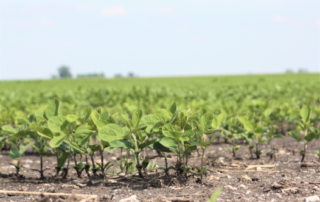
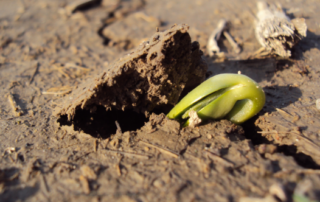
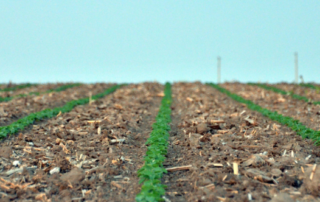
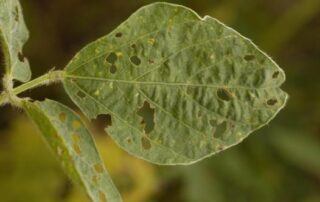
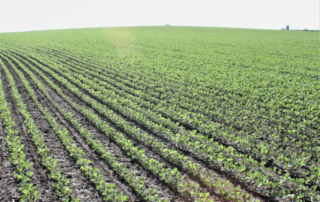
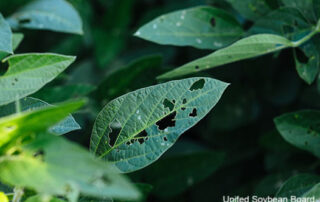

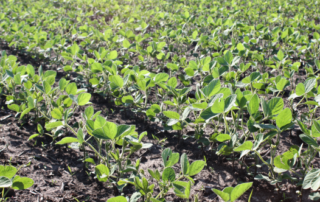
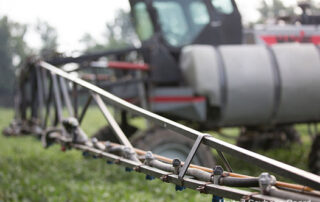
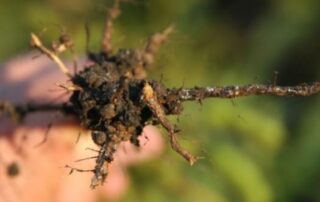

 and then
and then